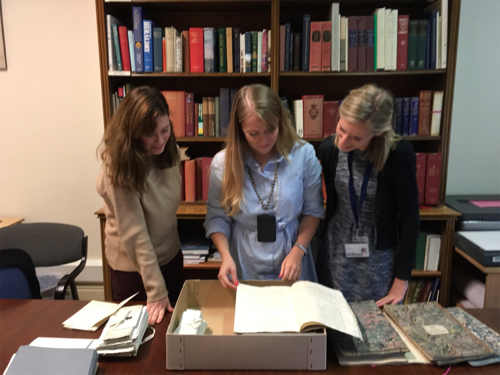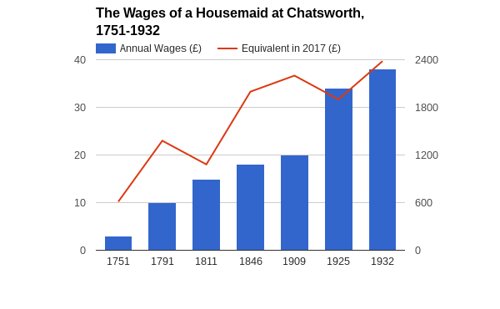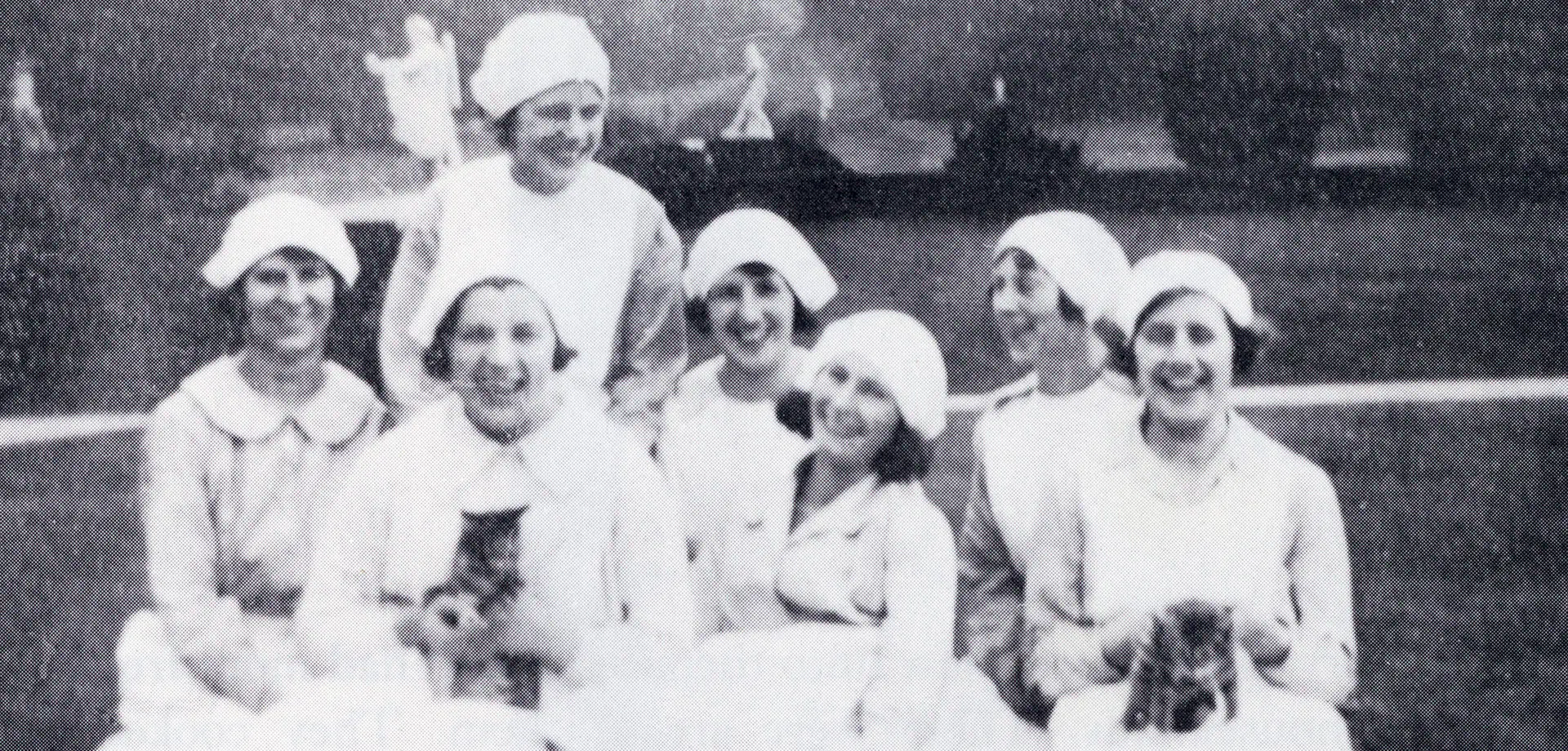Domestic service was the main employer of women until the early twentieth century, but only a small proportion worked in large country houses like Chatsworth. While life in the big house could involve long hours, hard work and strict rules, one advantage was the higher wages. Although these were generous, wages could vary greatly depending on a servant’s gender or the position they occupied within the house. Butlers, housekeepers, and chefs were amongst those most highly paid, whereas hall boys and tempys (temporary maids) often received the lowest wages. This blog post will focus on the role considered most synonymous with service: the humble housemaid. We will trace Chatsworth’s housemaids over three centuries to uncover how their wages changed, how they compared to the national average, and what a maid might have been able to buy with her earnings.

From left to right: Fiona Clapperton, Lauren Butler and Hannah Wallace, PhD students from the University of Sheffield looking at an account book at Chatsworth
Eighteenth Century
Chatsworth did not start employing housemaids in the eighteenth century until 1737. Before that the Duke had relied on the labour of women from the local villages to clean and prepare the house. When housemaids were first employed at Chatsworth they were paid £3 a year. Although it may not seem much, housemaids did not have to pay for their accommodation as they lived in the house and the cost of their food was covered by the Duke through the payment of a ‘board wage’. Housemaids at Chatsworth often received more in board wages than they were paid for their services. By the end of the century the 5th Duke was paying his housemaids £10 a year, a sum much closer to the £15 paid to the housekeeper. The maids at Chatsworth received a higher wage than many other housemaids. Maids who served in less wealthy households might hope to earn £8 a year. This £2 difference was a significant one. In fact, it was the same amount Chatsworth spent on a ‘patent washing machine’ in 1806.
Nineteenth Century
When the Chatsworth household was surveyed in 1811, the housemaids were earning £11 each per year. In addition to this they received a small allowance for sugar, which amounted to roughly £3 per year. When the 6th Duke inherited, he raised the wages of all of his staff, and the housemaids began receiving £15. According to the account book for this year, the housemaids’ new annual wage could have bought 355 cotton wick candles, or one ox. In the mid-nineteenth century, board wages were brought back to replace the sugar allowance. While these were deducted for periods when the Duke was in residence, maids often came close to earning their total annual wage of £50. In 1862, for example, housemaid Eliza Jones was paid ‘£44.8.10 being a years Wages and Board Wages due this day, after deducting £4.9.0 for Board Wages during Your Grace’s stay at Chatsworth’. In a smaller home where only one servant was employed, £20 per year was considered a generous wage in the 1860s.

This graph shows the wages of a housemaid at Chatsworth, excluding board wages and other allowances, at unequal intervals between 1751 and 1932. While the payments consistently rose, the value was affected by inflation, in particular during events such as the Napoleonic Wars (1803-1815) and the First World War (1914-1918).
Twentieth Century
By the early Twentieth Century, when Victor Cavendish inherited Chatsworth and became 9th Duke of Devonshire, the household had been restructured in line with more professional attitudes towards domestic service. Although housemaids all received the same amount of money for board wages, they were no longer paid the same salary. Instead, a strict hierarchy existed. At the top of ladder was the First Housemaid, who acted as the Housekeeper’s deputy. At the bottom was the Seventh Housemaid. In 1909, First Housemaid Jane Miller earned £30 per year, whilst Seventh Housemaid Ellen Blagg only earned a paltry £14 per year in comparison. The Third Housemaid, Eva James, occupied the intermediate position, and in 1909 her yearly salary was £20. This was in line with the national average earnings for a Housemaid, which at this time was around £20 13s 4d. More professional attitudes towards domestic service didn’t just have an effect on the salaries paid to employees, it also led to investment in new household appliances to aid them in the work. However, it would have taken Eva eleven years to save up for the vacuum cleaner which was bought for Chatsworth in 1911 for the princely sum of £224!






